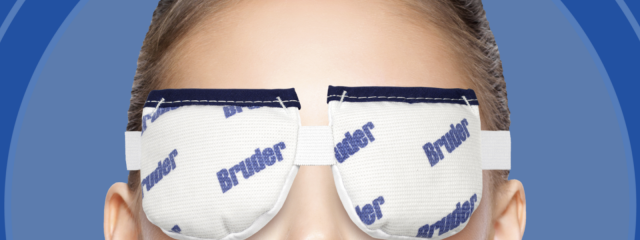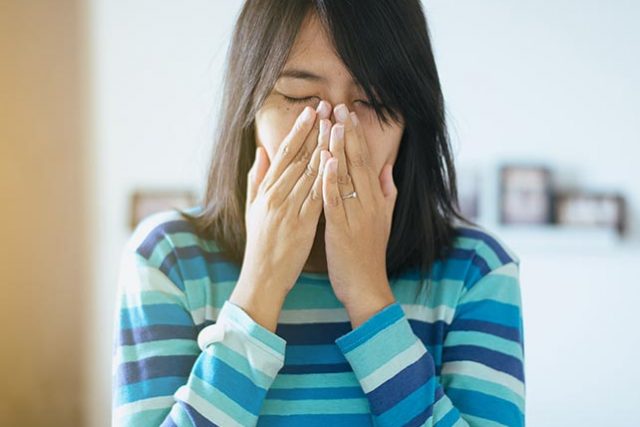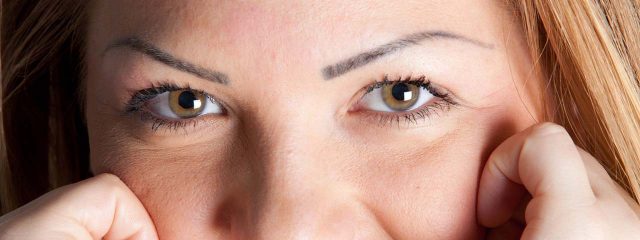Signs and Symptoms of Dry Eye
Persistent dryness, scratchiness and a burning sensation on your eyes are common symptoms of dry eye syndrome. These symptoms alone may be enough for your Flagstaff eye doctor to diagnose dry eye syndrome. Sometimes, he or she may want to measure the number of tears in your eyes. A thin strip of filter paper placed at the edge of the eye, called a Schirmer test, is one way of measuring this.
Some people with dry eyes also experience a "foreign body sensation” – the feeling that something is in the eye. And it may seem odd, but sometimes dry eye syndrome can cause watery eyes because the excessive dryness works to overstimulate production of the watery component of your eye's tears.
Ocular Allergies
Dry eye and ocular allergies both have similar symptoms. Allergies with dry eyes include itching, tearing, burning, and ocular dryness. Itching and inflammation play key roles in diagnosis. Serious ocular allergies may require medical intervention.
Bruder Compress for Dry Eyes

Patented BRUDER Moist Heat Eye Compress opens oil glands and allows natural oils to flow back into the eye relieving discomfort from aging, contact lenses, use of digital devices and more.
The easy-to-use compress delivers an effective moist heat treatment. Simply microwave for 20-25 seconds and apply for 10 minutes or as prescribed by your doctor.
The compress helps stabilize the tear film, improves oil gland function and slows tear evaporation. Properly hydrated and lubricated eyes can expel bacteria and debris more efficiently so your eyes will feel refreshed and rejuvenated.
- Safe for frequent use
- Self-hydrating – no need to add water
- Anti-bacterial and non-allergenic
- Washable and reusable.
Unique pod design provides improved fit and performance. Also available in a single eye model.
Read more about Bruder Compresses
We Now Offer Punctal Plugs
A punctal plug is a tiny biocompatible medical device that is inserted into the tear duct of an eye to block the duct. By blocking the tear duct, tears are prevented from draining away too quickly.
There are two types of plugs available:
- Dissolvable plugs made of materials such as collagen that the body absorbs. Dissolvable punctal plugs are used to determine if the treatment works, if so the semi-permanent punctal plugs might be considered.
- Semi-permanent plugs made out of silicone, and which should last indefinitely. They can be easily removed by using a forceps and extracting the plug or it can be flushed out by using a saline solution.

What Causes Dry Eyes?
In dry eye syndrome, the tear glands that moisturize the eye don't produce enough tears, or the tears have a chemical composition that causes them to evaporate too quickly.
Dry eye syndrome has several causes. It occurs:
- As a part of the natural aging process, especially among women over age 40.
- As a side effect of many medications, such as antihistamines, antidepressants, certain blood pressure medicines, Parkinson's medications, and birth control pills.
- Because you live in a dry, dusty or windy climate with low humidity.
If your home or office has air conditioning or a dry heating system, that too can dry out your eyes. Another cause is insufficient blinking, such as when you're staring at a computer screen all day.
Dry eyes are also associated with certain systemic diseases such as lupus, rheumatoid arthritis, rosacea or Sjogren's Syndrome (a triad of dry eyes, dry mouth, and rheumatoid arthritis or lupus).
Long-term contact lens wear, incomplete closure of the eyelids, eyelid disease and a deficiency of the tear-producing glands are other causes.
Dry eye syndrome is more common in women, possibly due to hormone fluctuations. Recent research suggests that smoking, too, can increase your risk of dry eye syndrome. Dry eye has also been associated with incomplete lid closure following blepharoplasty – a popular cosmetic surgery to eliminate droopy eyelids.
Meibomian Gland Dysfunction
Meibomian gland dysfunction (MGD) is probably the most common eye problem you have never heard of. The strange sounding name is likely part of the reason. MGD is also called “meibomianitis,” which is not any easier to remember.
Meibomian gland dysfunction is either a blockage or other abnormality of the meibomian glands causing them not to secrete enough oil into the tears, causing the tears then to evaporate too quickly. Therefore, MGD is the leading cause of dry eye syndrome.
The symptoms of MGD are nearly identical to those of dry eye syndrome — itchy, red eyes, with a sandy, gritty feeling, and blurred vision.


Challenges such as astigmatism, presbyopia, keratoconus and dry eyes needn’t be a barrier to contact lens wear, but they do require more time and patience.

Challenges such as astigmatism, presbyopia, keratoconus and dry eyes needn’t be a barrier to contact lens wear, but they do require more time and patience

Dry Eye Syndrome is a chronic eye condition that occurs when the eyes produce an insufficient amount of tears.

We see many dry eye patients throughout the year as it is one of the most common eye conditions we treat.

Is it true that Dry Eye symptoms seem to be more severe in the winter?

TearCare® is an innovative Dry Eye procedure that targets the blocked meibomian glands in your eyelids that produce oils.

